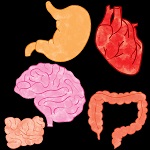
In the classic cult movie, Young Frankenstein, Igor had to pick out a brain to finish assembling the monster. But brains were in short supply which drove Igor to pick a brain labeled defective “off the lab shelf”. So, what if you could send a tech to a supply room and pick out an organ? We don’t have an organ bank yet, but recent research on freezing, storing, and thawing organs may make this a reality.
Researchers harvested rat kidneys, froze and thawed them, then transplanted them back into rats. And while not perfect, the kidneys began working and made urine.
Since the early nineteen-fifties, scientists have been looking for ways to preserve organs for transplantation, such as cryopreservation, the ultracold freezing of tissues. They’re also improving cryoprotective agents for frozen organs. When tissues freeze, there’s ice formation which damages cells and ruins the organ. One way around this is tissue vitrification which rapidly cools an organ to a glass-like frozen state and prevents damage to the tissue.
But also ice forms when thawing. To overcome this, they infused iron-containing nano-particles into the organ before freezing. The nano-particles spread throughout the organ.
Then to thaw it, they placed the organ in a magnetic coil where an oscillating magnetic field gently and uniformly warmed the nano-particles and the surrounding tissue to avoid ice formation.
Even though this process isn’t ready yet, it takes us another step closer to making an organ bank a reality.
We are Drs. David Niesel and Norbert Herzog, at UTMB and Quinnipiac University, where biomedical discoveries shape the future of medicine. For much more and our disclaimer go to medicaldiscoverynews.com or subscribe to our podcast. Sign up for expanded print episodes at www.illuminascicom.com or our podcasts at: Medical Discovery News (buzzsprout.com)
More Information
Vitrification and nanowarming enable long-term organ cryopreservation and life-sustaining kidney transplantation in a rat model
We show that vitrified kidneys can be cryogenically stored (up to 100 days) and successfully recovered by nanowarming to allow transplantation and restore life-sustaining full renal function in nephrectomized recipients in a male rat model. Scaling this technology may one day enable organ banking for improved transplantation.
Scientists successfully unfroze rat organs and transplanted them — a ‘historic’ step that could someday transform transplant medicine
The rat kidney was peculiarly beautiful — an edgeless viscera about the size of a quarter, gemstone-like and gleaming as if encased in pure glass. It owed its veneer to a frosty descent in liquid nitrogen vapor to minus 150-degrees Celsius, a process known as vitrification, that shocked the kidney into an icy state of suspended animation. Then researchers at the University of Minnesota restarted the kidney’s biological clock, rewarming it before transplanting it back into a live rat — who survived the ordeal.